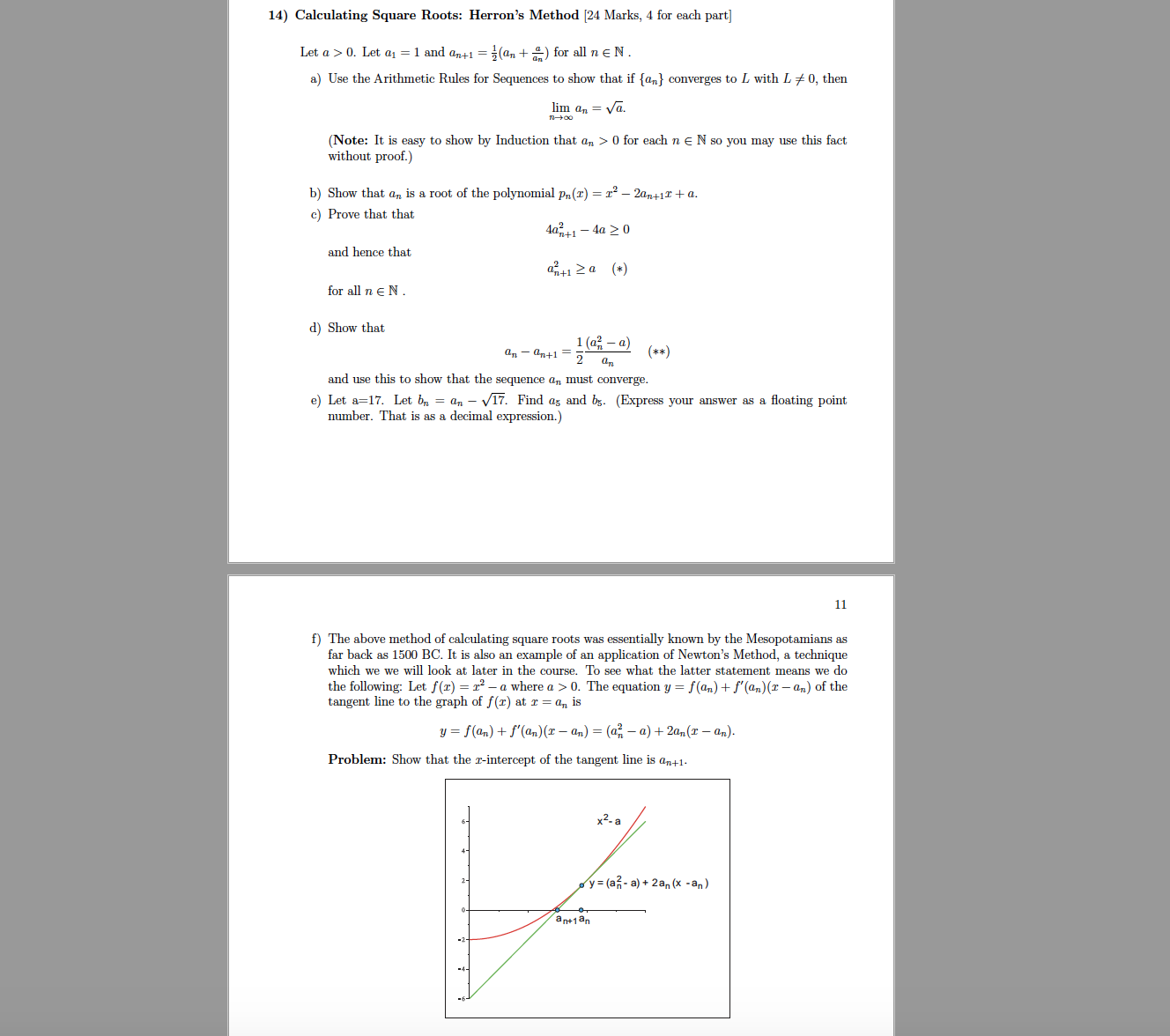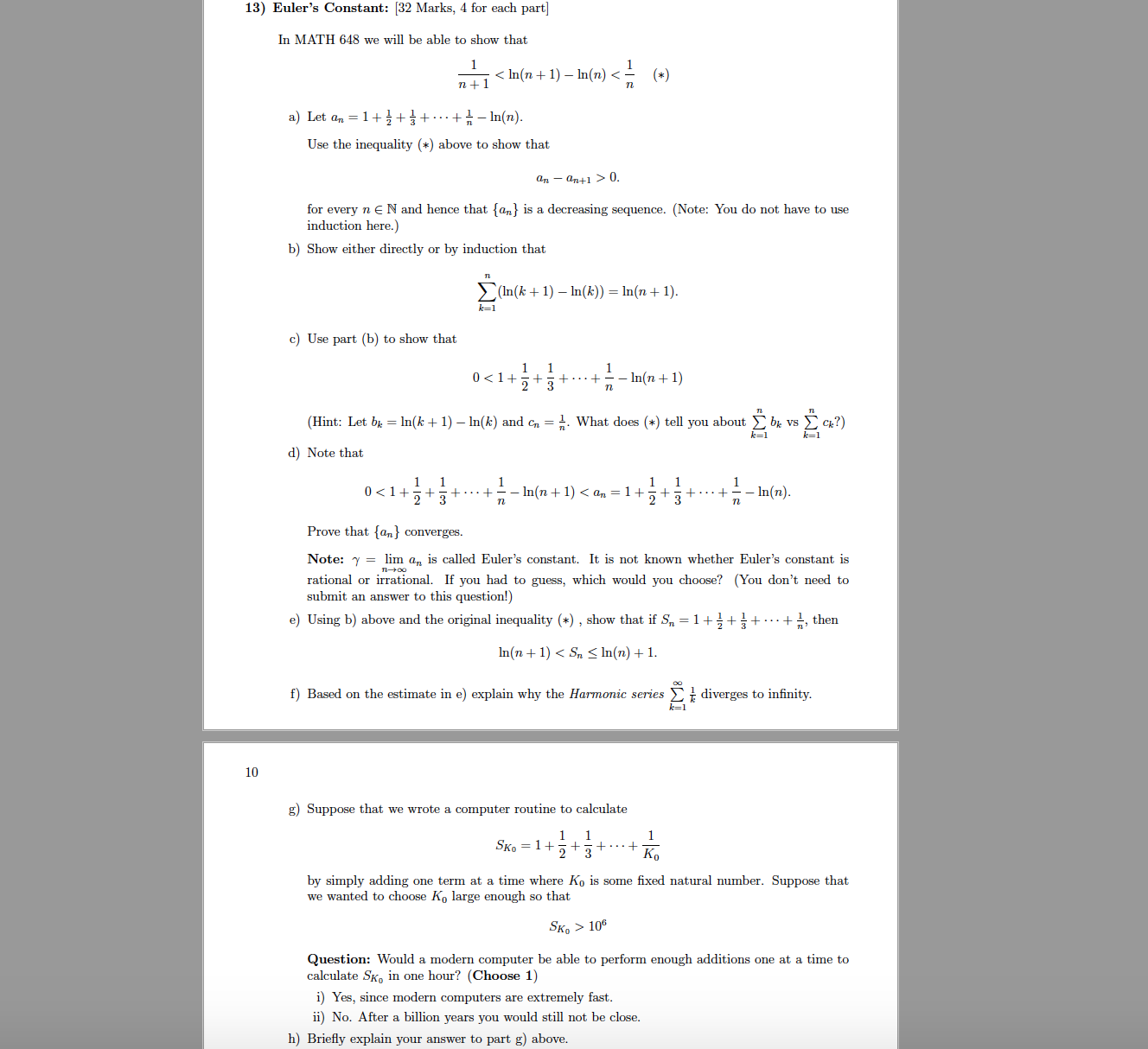3 bonus questions
16) Decimal Expansion [16 Marks, 4 for each part] Note: In this question we are going to see how to use the MCT to build a decimal expansion for every real number in [0, 1]. a) What is IM8 b) Let {bn} be a sequence with bn E {0, 1, 2, ...,9}. Let In = Show that {rn} is nondecreasing and bounded above by 1. Note: This shows that {} converges and that if B = lim rn, then BE [0, 1]. c) Let a E [0, 1]. Define a1 = max{k E {0, 1, 2, . ..,9} | 16 0 for each n E N so you may use this fact without proof. b) Show that an is a root of the polynomial pr(r) = 12 - 2antir + a. c) Prove that that 407+1 - 4a 2 0 and hence that an+1 20 (*) for all n E N . d) Show that an - On+1 = 1 (@; -a) (* *) 2 an and use this to show that the sequence an must converge. e) Let a=17. Let by = an - V17. Find as and by. (Express your answer as a floating point number. That is as a decimal expression.) 11 f) The above method of calculating square roots was essentially known by the Mesopotamians as far back as 1500 BC. It is also an example of an application of Newton's Method, a technique which we we will look at later in the course. To see what the latter statement means we do the following: Let f(r) = r - a where a > 0. The equation y = f(an) + f'(an)(r - an) of the tangent line to the graph of f(r) at r = a, is y = f(an) + f'(an)(I - an) = (a2 - a) + 2an(1 - an). Problem: Show that the r-intercept of the tangent line is an+1. * 2 _ a o y = (a - a) + 2an (x -an) anti ar13) Euler's Constant: [32 Marks, 4 for each part] In MATH 648 we will be able to show that n+ 1 0. for every n E N and hence that {an} is a decreasing sequence. (Note: You do not have to use induction here. b) Show either directly or by induction that [ (In( k + 1) - In(k)) = In(n + 1). c) Use part (b) to show that +2 + 3 + 4 - - In(n + 1) (Hint: Let be = In(k + 1) - In(k) and on = 2. What does (*) tell you about _ be vs _ Ck?) d) Note that 0 106 Question: Would a modern computer be able to perform enough additions one at a time to calculate Sk, in one hour? (Choose 1) i) Yes, since modern computers are extremely fast. ii) No. After a billion years you would still not be close. h) Briefly explain your answer to part g) above









